Summer bulbs: 14 varieties for beds, borders and pots
We round up the best summer bulbs for bold displays and delightful fragrance, including lilies, dahlias, gladioli and montbretia
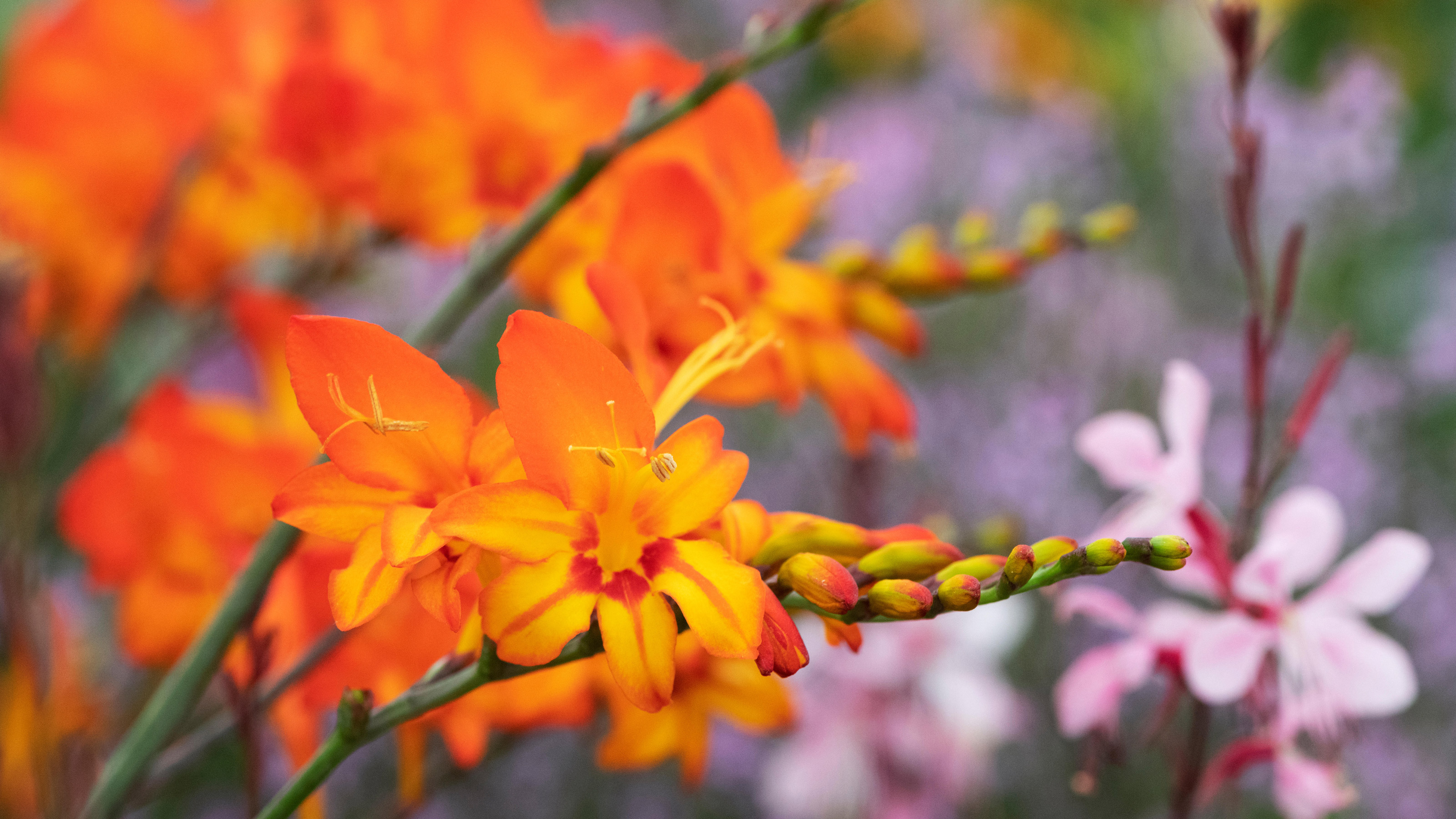

Summer bulbs encompass bulbs, tubers, corms and rhizomes that bloom during summer. Although some (like alliums) go in the ground in fall, most are planted in late winter or spring. Containing a whole plant in a tightly packaged ball, bulbs are eternally fascinating.
These weird and wonderful parcels are like magicians that transform from tiny, ugly ducklings into big, beautiful flowering plants. There is a glorious range to choose from. This includes scented summer gems (lilies, freesias and tuberoses); bulbs that provide a blast of late-season color (dahlias, crocosmias and cannas); and exotics that can be enjoyed outside in the warm months (Tigridia, Colocasia and Tulbaghia).
Gladioli and dahlias are great for color if you’re after dramatic flower bed ideas, and Gladiolus ‘Ruby’ has unusual deep-red blooms. Meanwhile, ‘Bananarama’ (yellow) and ‘Plum Tart’ (magenta) are more traditional-looking gladioli that make good cut flowers. The fashionable dahlia ‘Café au Lait’ has coffee-peach blooms that can reach 10in (25cm wide), while ‘Bohemian Spartacus’ and ‘Bishop of Llandaff’ sizzle red.
Bulb expert Christine Skelmersdale also recommends crocosmia (aka montbretia). ‘Modern crocosmias have large open flowers, plus well branched stems that flower for weeks,’ she says. As Christine notes, they give a splash of color when other herbaceous perennials have finished flowering. Crocosmias work well edging borders with tall rudbeckias and heleniums. Try ‘Miss Scarlet’, orange ‘Scorchio’ and ‘Paul’s Best Yellow’.
Start off your choice of summer bulbs under cover in late winter and early spring. Then look forward to months of cheerful, statuesque and fragrant blooms for a sizzling summer ahead.
Brighten your garden with these 14 summer bulbs
These summer bulbs will add bold, rich and spicy color schemes to your garden. Many will fill beds and garden borders with sublime fragrance. Here we showcase 14 stunning varieties for your plot, including summer stunners for late-season color, hot exotics, structural beauties and container picks.
1. Dahlia ‘Bright Eyes’
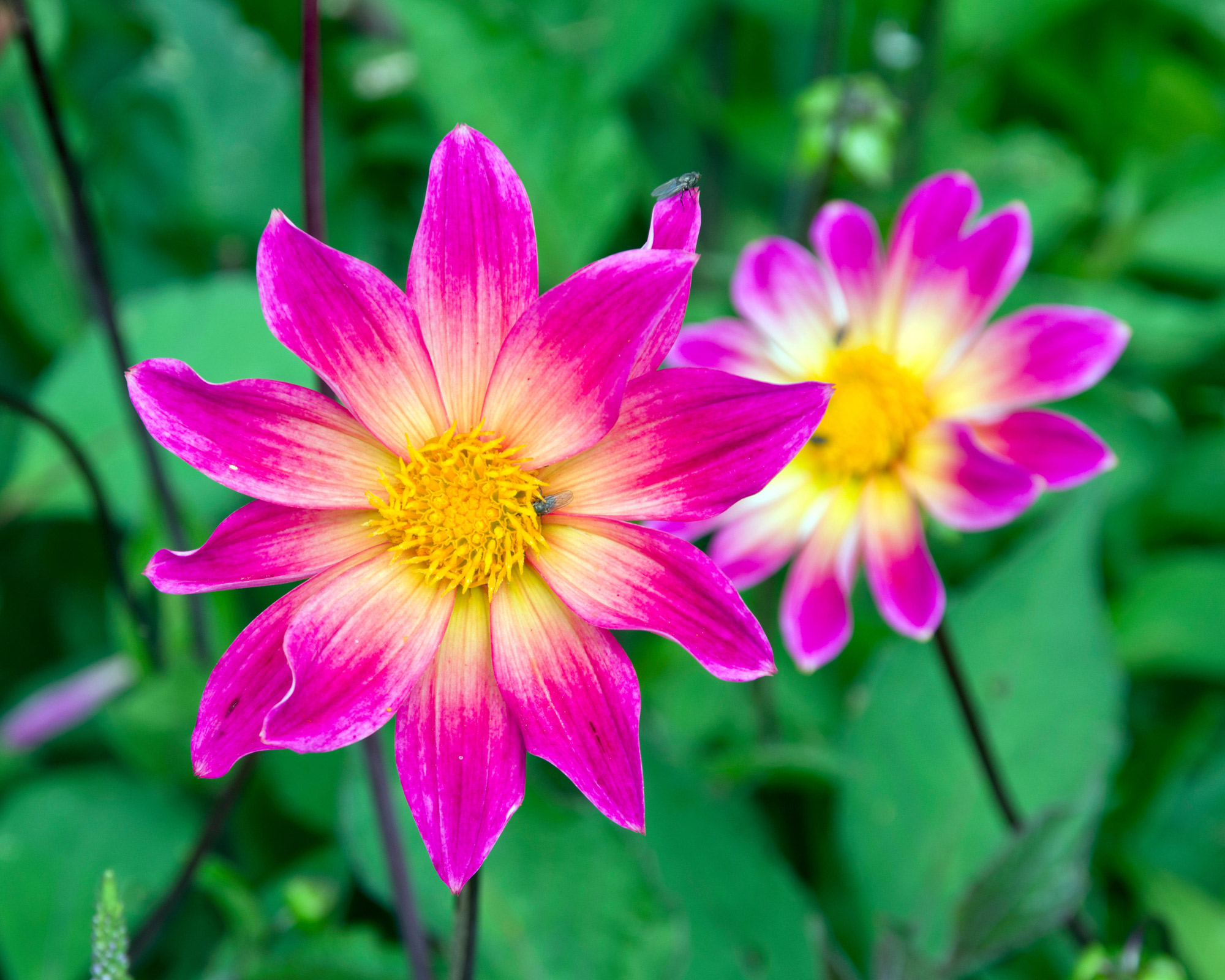
Dahlia ‘Bright Eyes’
- Hardiness: USDA 7-10 (UK H3)
- Height: 2ft (60cm)
- Best for: pollinators
This lovely dahlia has bright pink and yellow single flowers that attract pollinators in late summer and autumn. It’s a great choice of summer bulbs if you are looking for bee-friendly plants to add to your garden – and this dahlia attracts butterflies, too.
Pot up tubers in pots undercover in late winter or early spring. Plant out after the last frost in rich, moisture-retentive, well-drained soil in full sun. The top of the tubers, where the shoots are, should be at the soil surface.
Keep cutting for the vase to maintain flowering. In mild areas, mulch thickly in autumn. In cold areas, lift and store the tubers over winter.
2. Lilium ‘Casa Blanca’ AGM
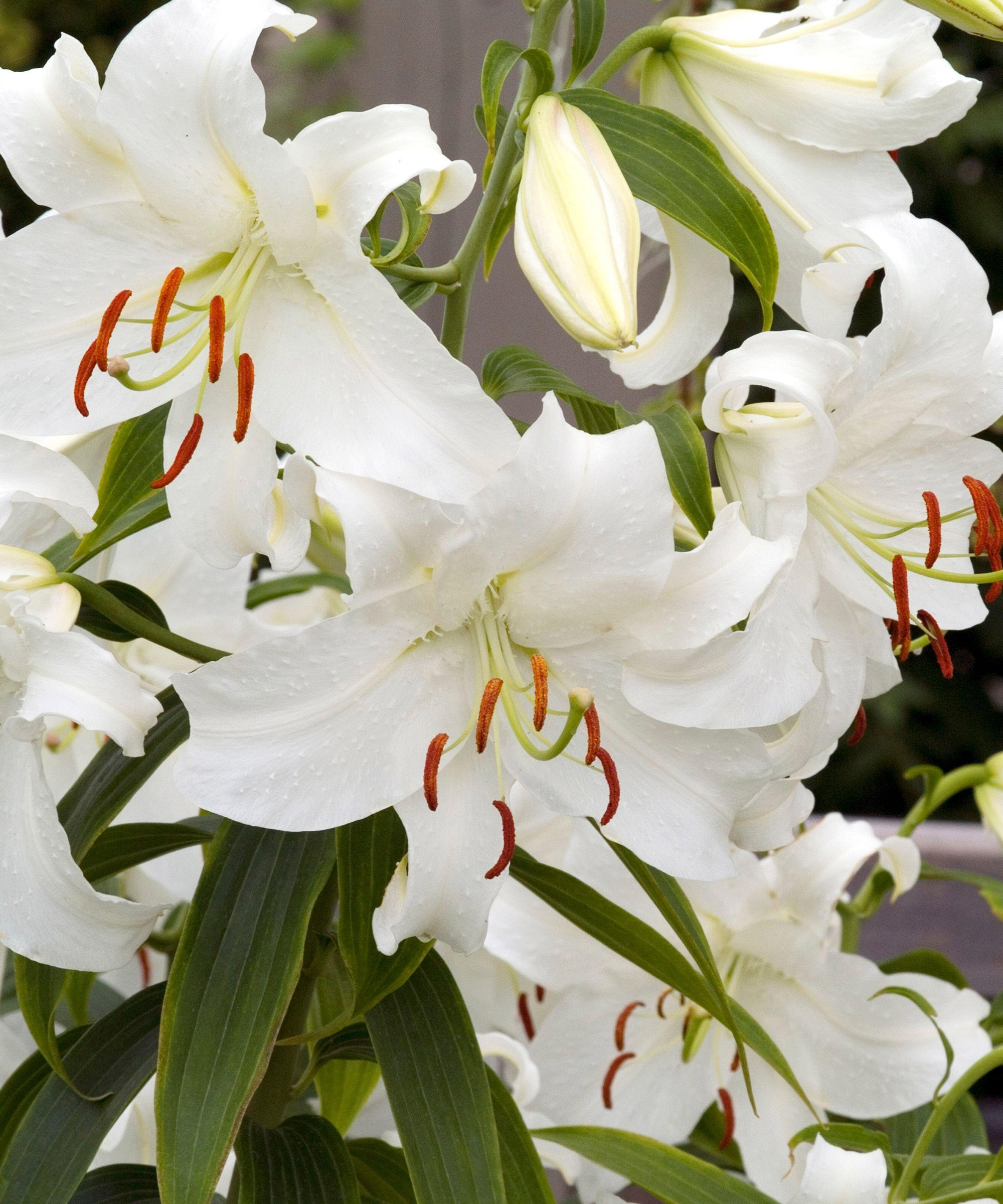
Lilium ‘Casa Blanca’
- Hardiness: USDA 5-8 (UK H6)
- Height: 4ft (1.2m)
- Best for: fragrance
‘Casa Blanca’ is quite simply one the best Oriental lilies for classic, elegant white flowers that exude heavenly scent. This plant’s stunning, large trumpets are produced in the height of summer on tall stems. It’s a great choice if you want to know how to grow lilies to add impact to the plot.
Plant before the end of early spring, 6in (15cm) deep, in moisture-retentive, well-drained neutral-acid soil. Pick a spot in full sun or semi-shade. These summer bulbs also grow well in big containers, and this is preferable if you have alkaline soil.
Bear in mind that lilies are one of the plants that are poisonous to cats.
3. Crocosmia ‘Limpopo’
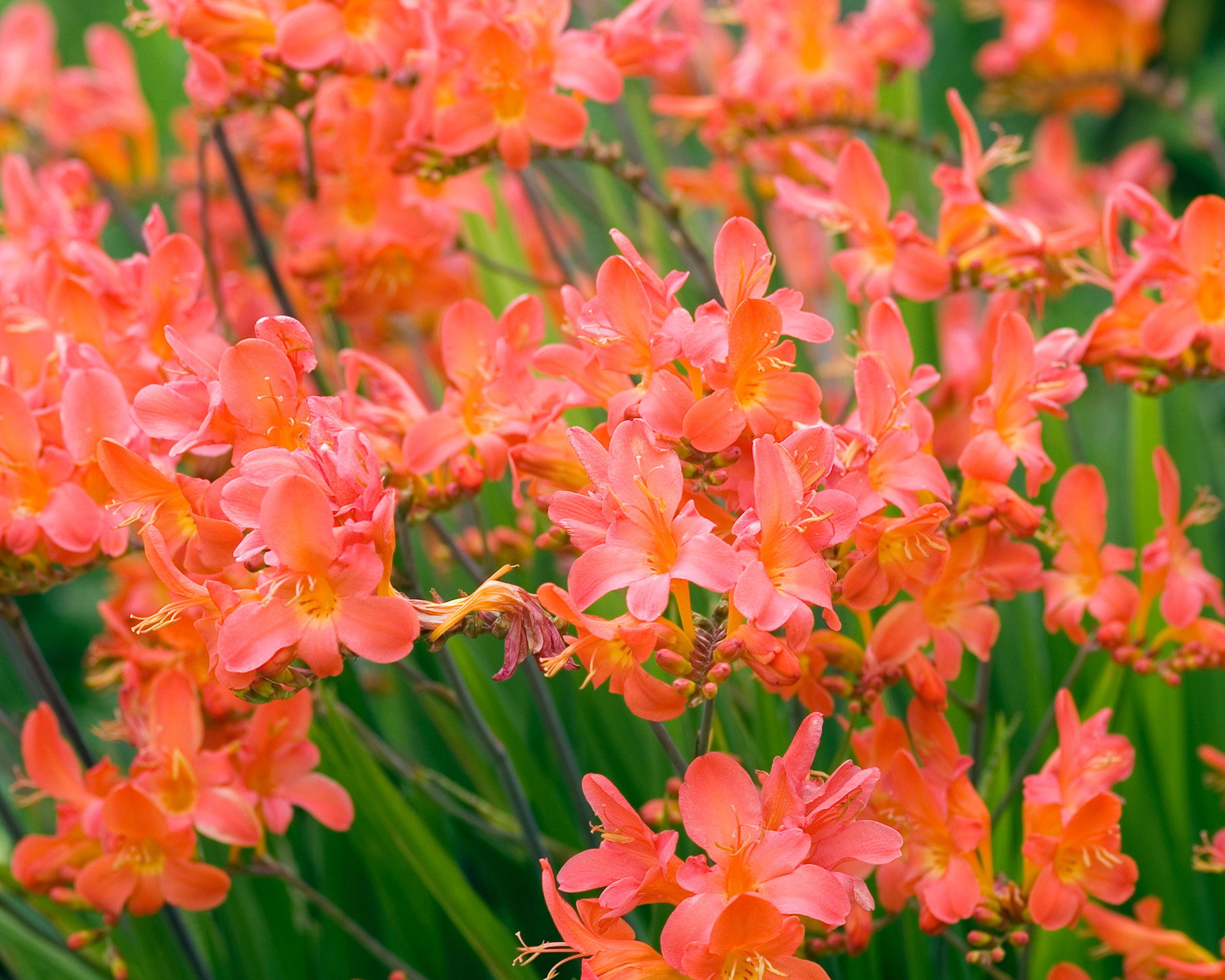
Crocosmia ‘Limpopo’
- Hardiness: USDA 5-9 (UK H5)
- Height: 2.5ft (75cm)
- Best for: south-facing spots
Highly recommended by bulb expert Christine Skelmersdale of Broadleigh Gardens this modern montbretia has fabulous sprays of outward-facing orange-pink flowers and green sword leaves, in late summer. It’s a great choice for a south-facing garden as it thrives in full sunshine. That said, it is also happy in semi-shade.
With these summer bulbs, you need to plant the corms in early spring. Plant them 6in (15cm) deep in well-drained, moisture-retentive soil. In cold areas, mulch in autumn. Remember to lift and divide every few years, as dense clumps of corms can hamper flower power.
4. Ismene x deflexa AGM
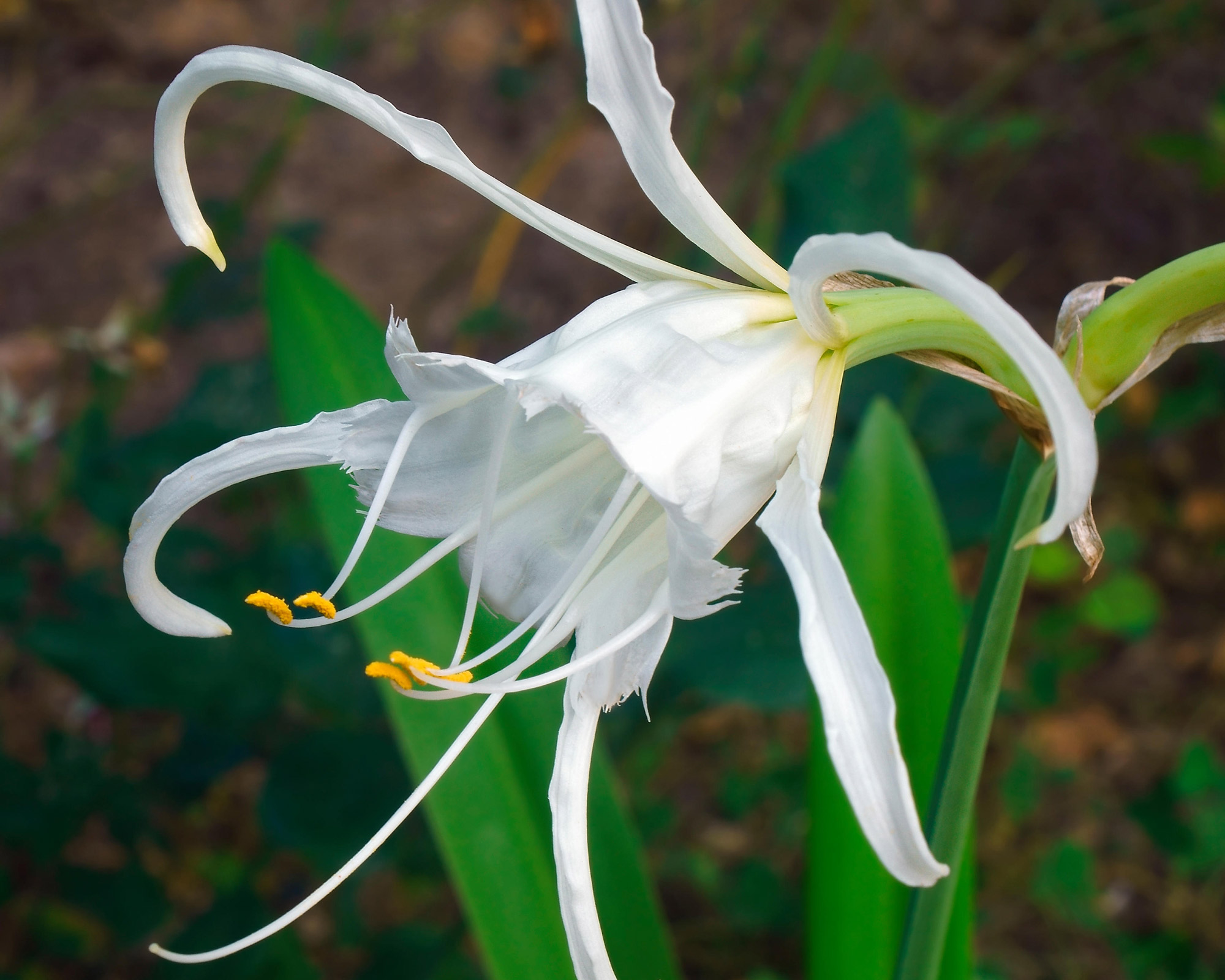
Peruvian daffodil (Ismene x deflexa)
- Hardiness: USDA 8-10 (UK H1C)
- Height: 2ft (60cm)
- Best for: fragrance
The ‘Peruvian daffodil’ (syn. Hymenocallis × festalis) is an aromatic delight. It bursts forth with fragrant white flowers that look like exotic narcissus. So it’s perfect if you want to plant daffodils or you missed out on a traditional spring display. Ismene flowers from late spring to the middle of summer.
Plant these summer bulbs in late winter (with the necks slightly above the soil) in big pots that can be moved outside in the middle of spring. Store pots under cover in winter, when they should be watered sparingly. In warm climates, the Peruvian daffodil can be planted outside in well-drained, moisture-retentive soil; choose a spot with full sun.
5. Eucomis bicolor AGM
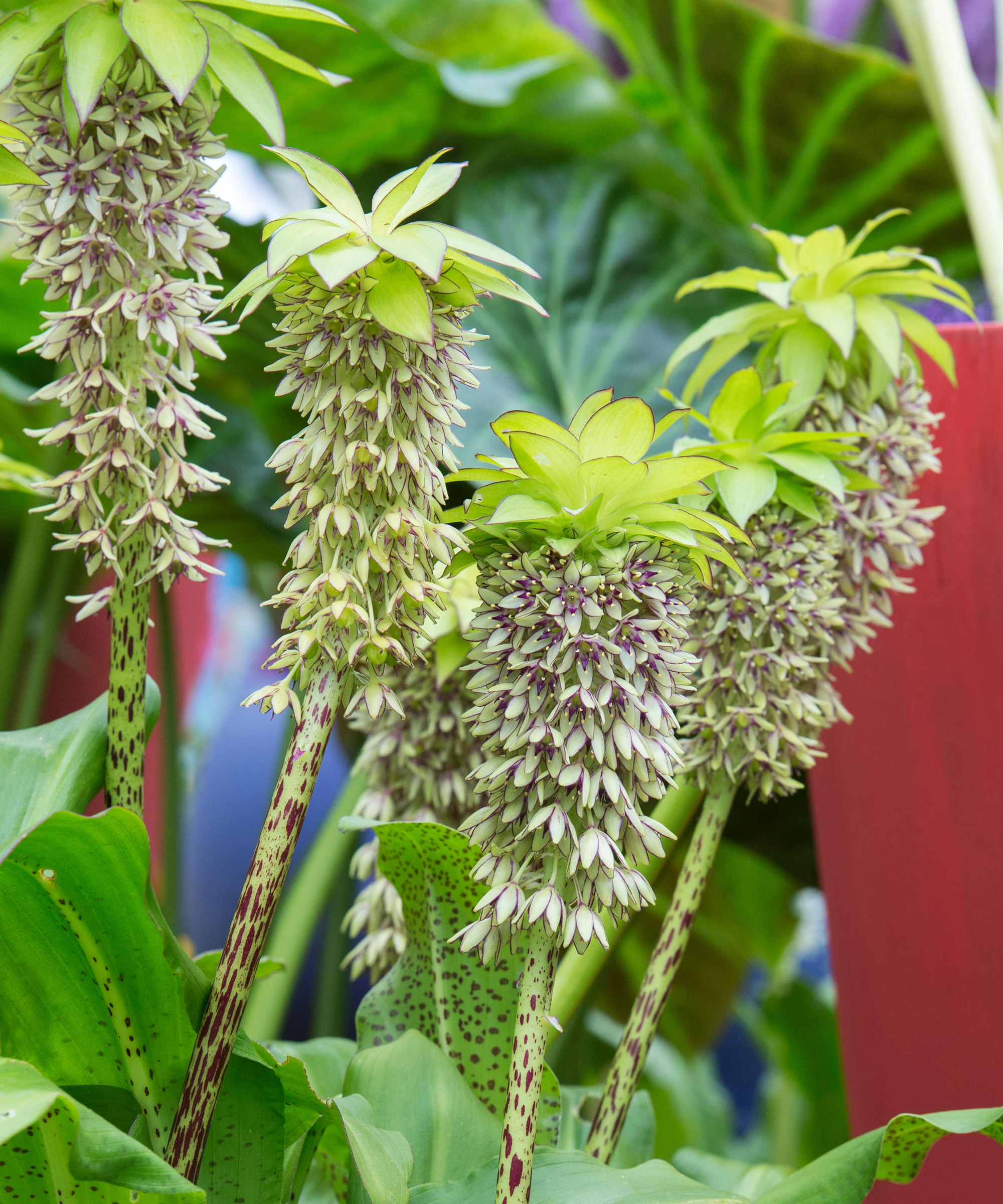
Pineapple lily (Eucomis bicolor)
- Hardiness: USDA 7-10 (UK H4)
- Height: 2ft (60cm)
- Best for: exotic blooms
In the height of summer, the pineapple lily adds a great deal of interest to a garden. It’s ideal if you love tropical plants but want something fairly low maintenance. It has distinctive spikes of lime-ivory flowers rimmed with claret and topped with a punk-haired crown of green leaves.
Plant in pots under glass in late winter, or outside in late spring. These summer bulbs need to be placed 6-8in (15-20cm) deep in well-drained, humus-rich soil in sheltered full sun. Protect with dry mulch in autumn. In very cold areas, lift and overwinter in a frost-free place.
6. Gladiolus murielae AGM
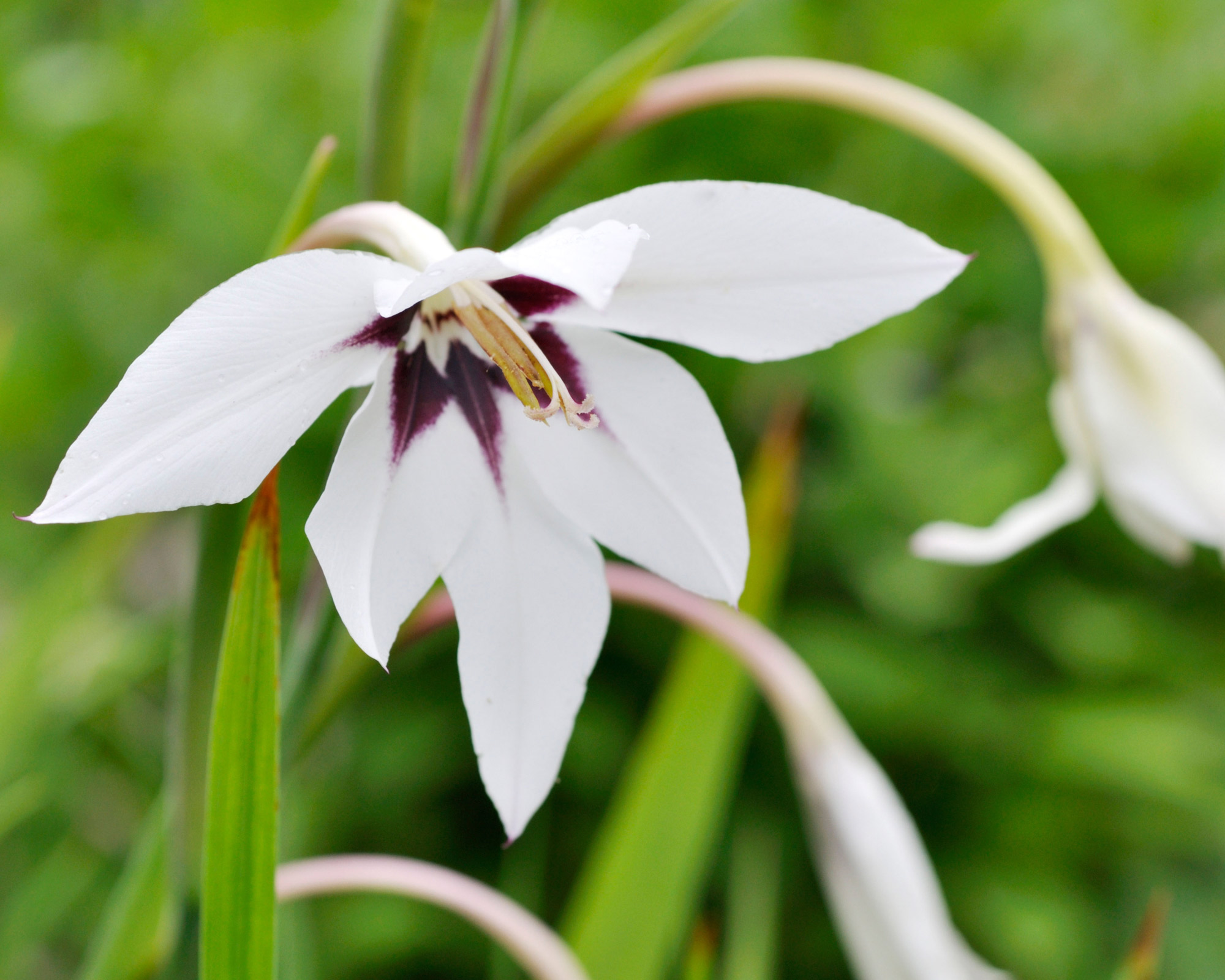
Gladiolus murielae (Abyssinian gladiolus)
- Hardiness: USDA 7-10 (UK H3)
- Height: 3ft (90cm)
- Best for: cut flowers
This Abyssinian gladiolus is a delightful option if you’re on the lookout for unusual cottage garden ideas – indeed, it was grown for cut flowers by the Victorians. This statuesque beauty has scented white parasol flowers with maroon throats that flower from late summer to the middle of fall.
Plant in containers in late winter, with 15 corms per 12in (30cm) pot. Do this in layers, 2in and 6in (5cm/15cm) deep. Alternatively, plant outside in late spring, in well-drained soil and full sun.
In areas that have dry, warm winters, these summer bulbs can be grown outside all year. Everywhere else, they are best lifted and overwintered under cover.
7. Tulbaghia violacea AGM
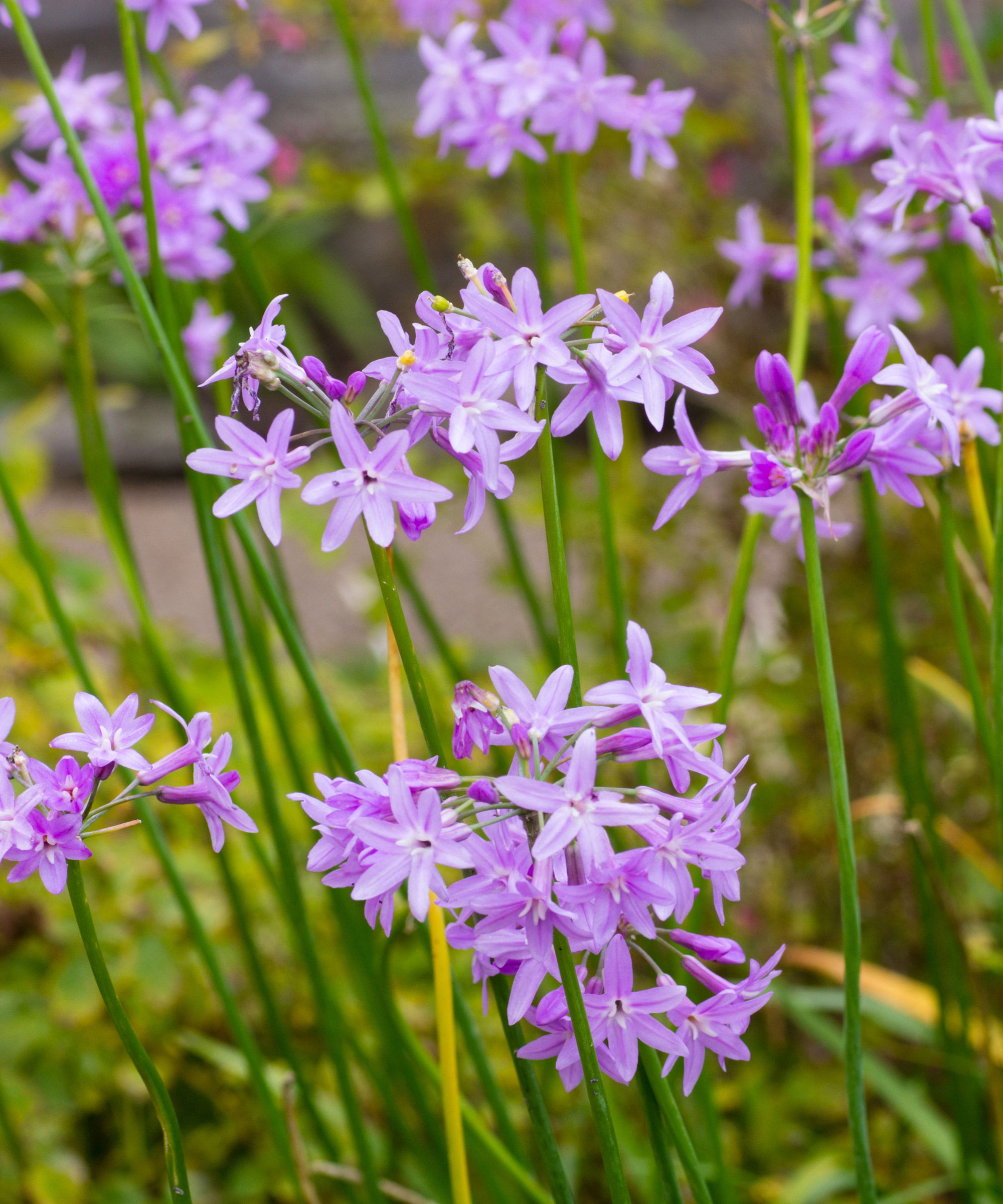
Tulbaghia violacea (society garlic)
- Hardiness: USDA 7-10 (UK H3)
- Height: 2ft (60cm)
- Best for: rockeries
Society garlic is a rhizomatous perennial from South Africa. It produces mauve flowers on slender stems above strappy, grass-like leaves in summer and early autumn. It’s resilient, so it's one of the top plants for rockeries, and is also an easy-going option for cottage gardens and flower beds.
Probably the hardiest tulbaghia, it can be grown in very well-drained soil in sheltered full sun and mulched before frosts. However, in very cold areas, it is best kept in a pot that is overwintered indoors. Pot up under cover in late winter or plant outside in mid spring.
8. Polianthes tuberosa ‘The Pearl’
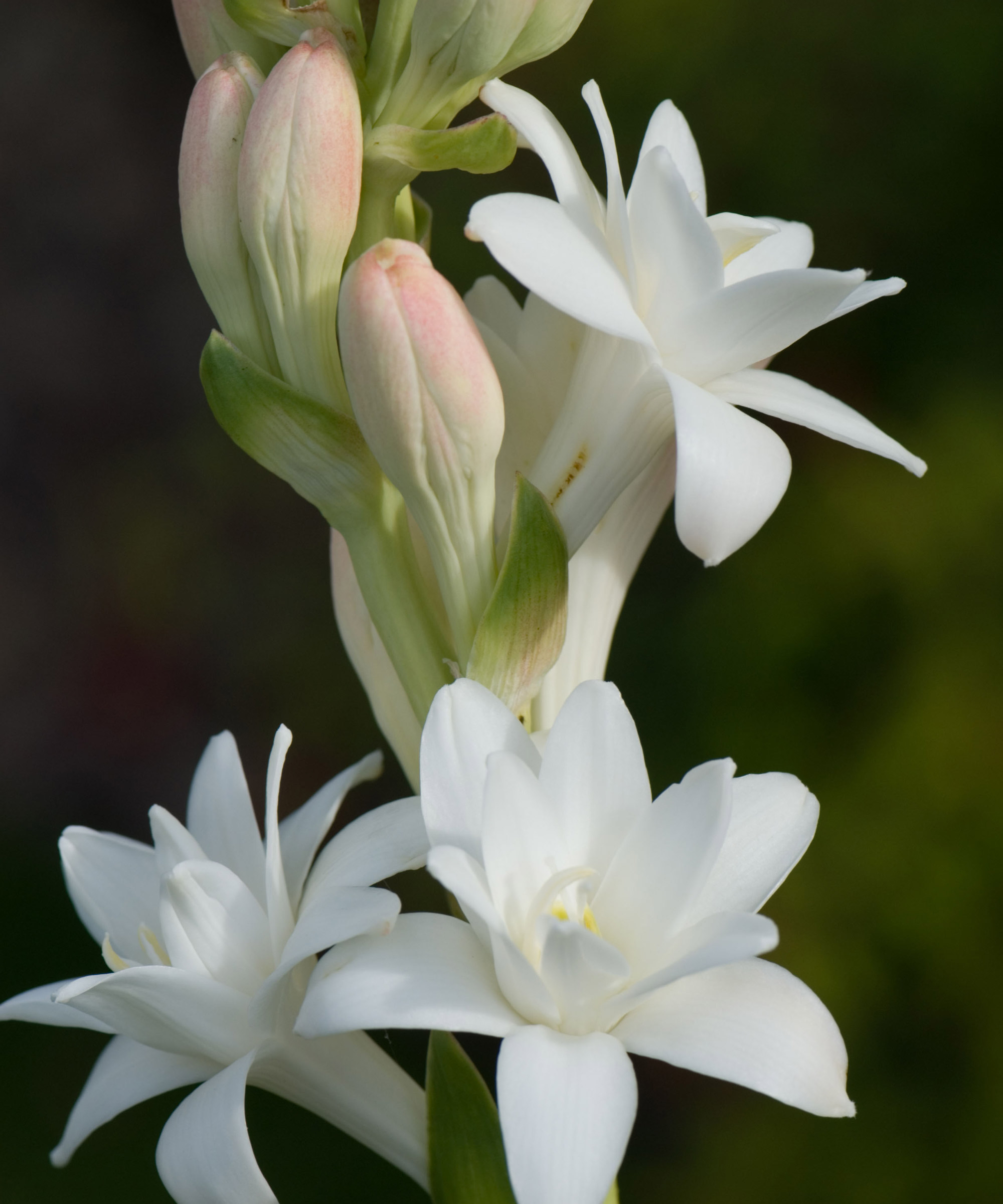
Polianthes tuberosa ‘The Pearl’
- Hardiness: USDA 7-10 (UK H2)
- Height: 2ft (60cm)
- Best for: fragrance
Tuberose is a Mexican perennial with white waxy flowers that are loved by perfumers. These blooms produce a strong sweet scent, which intensifies at night. These summer bulbs also add height and impact to a garden thanks to their upright stems and exotic appearance.
This double-flowered variety can be potted up in later winter in a warm greenhouse. Plant the tubers 4-6in (10-15cm) deep. Move pots outdoors in late spring.
In warmer climates, they can be grown outside and will appreciate a mulching to protect them in winter.
9. Tigridia pavonia
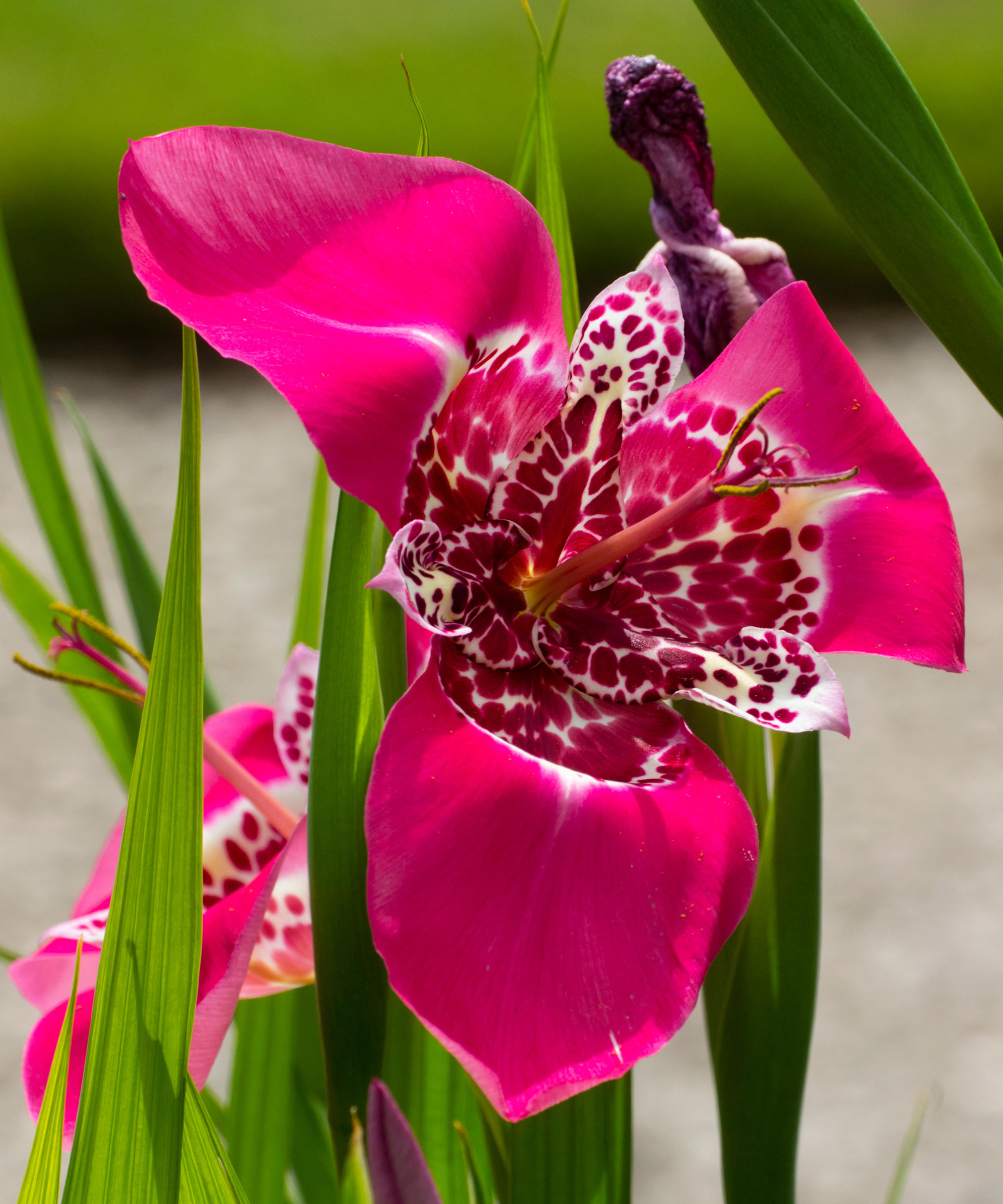
Peacock tiger flower (Tigridia pavonia)
- Hardiness: USDA 8-11 (UK H1C)
- Height: 20in (50cm)
- Best for: exotic blooms
The peacock tiger flower provides stunning color in late summer. It looks like something you might stumble upon in a jungle: strange, spotted blooms in red, pink, orange, and yellow. The bulbs were eaten by the Aztecs and are said to taste like sweet potatoes and chestnuts.
Plant in late winter, placing 4in (10cm) deep in containers undercover, then move outside in late spring. Alternatively, plant in well drained soil in full sun after the frosts have passed.
In mild areas, protect with a mulch before winter. Everywhere else, lift and store dry over winter.
10. Gladiolus ‘Purple Flora’
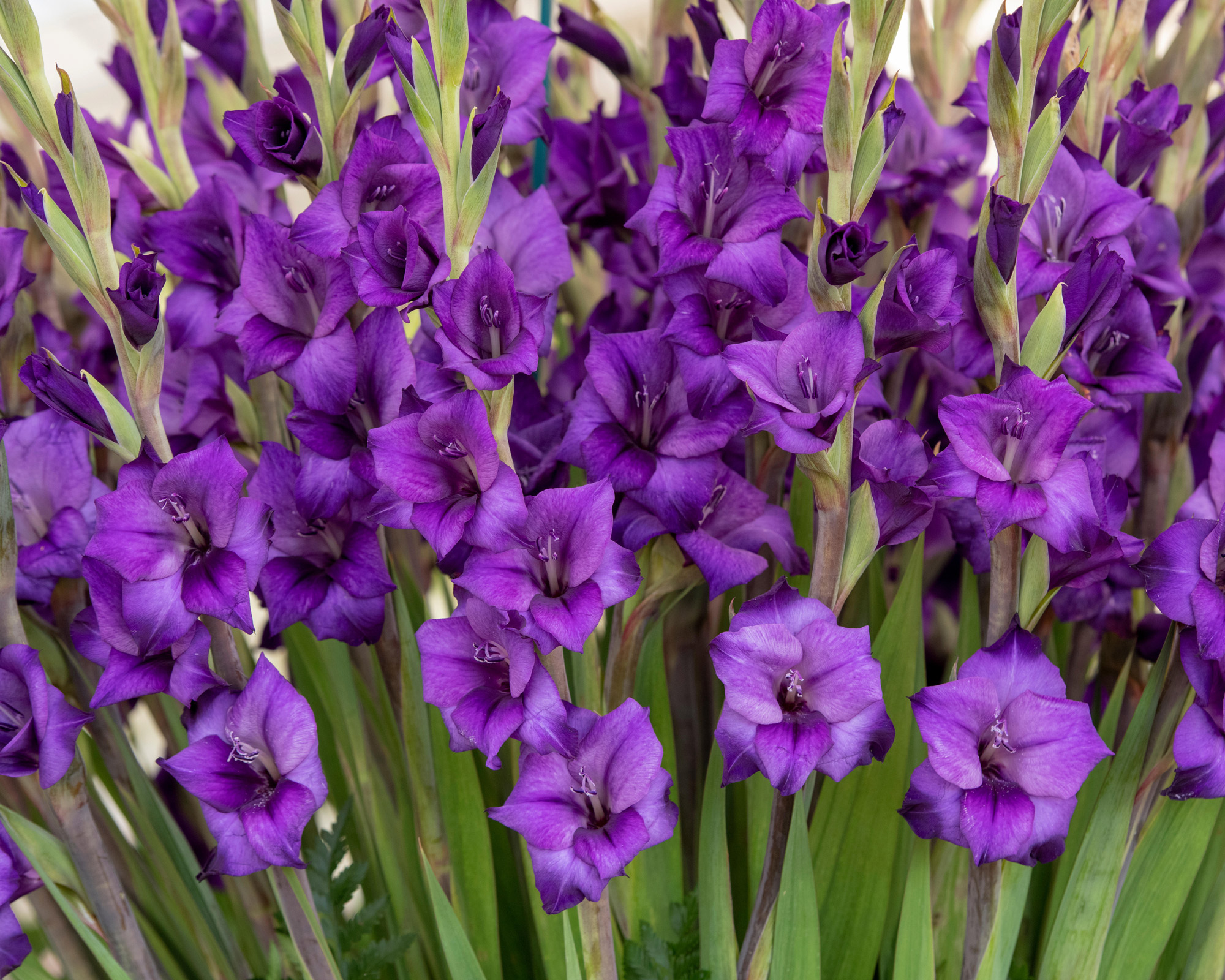
Gladiolus ‘Purple Flora’
- Hardiness: USDA 7-10 (UK H3)
- Height: 4ft (1.2m)
- Best for: height
This popular large-flowered gladioli adds showstopping elegance to beds and borders. If you’re looking to plant gladioli bulbs in particular, this is one of the most dramatic you can try. Its tall spires of velvety violet flowers rise up amongst sword-like foliage in summer and autumn.
Place the corms in big pots undercover in late winter, or plant 4-6in (10-15cm) deep from late spring. Plant every fortnight into summer if you want flowers in autumn.
Gladioli like fertile, well-drained soil in sheltered full sun. In mild areas, cover with mulch in autumn. In cold areas, lift and overwinter in a dry, frost-free place.
11. Gloriosa superba ‘Rothschildiana’
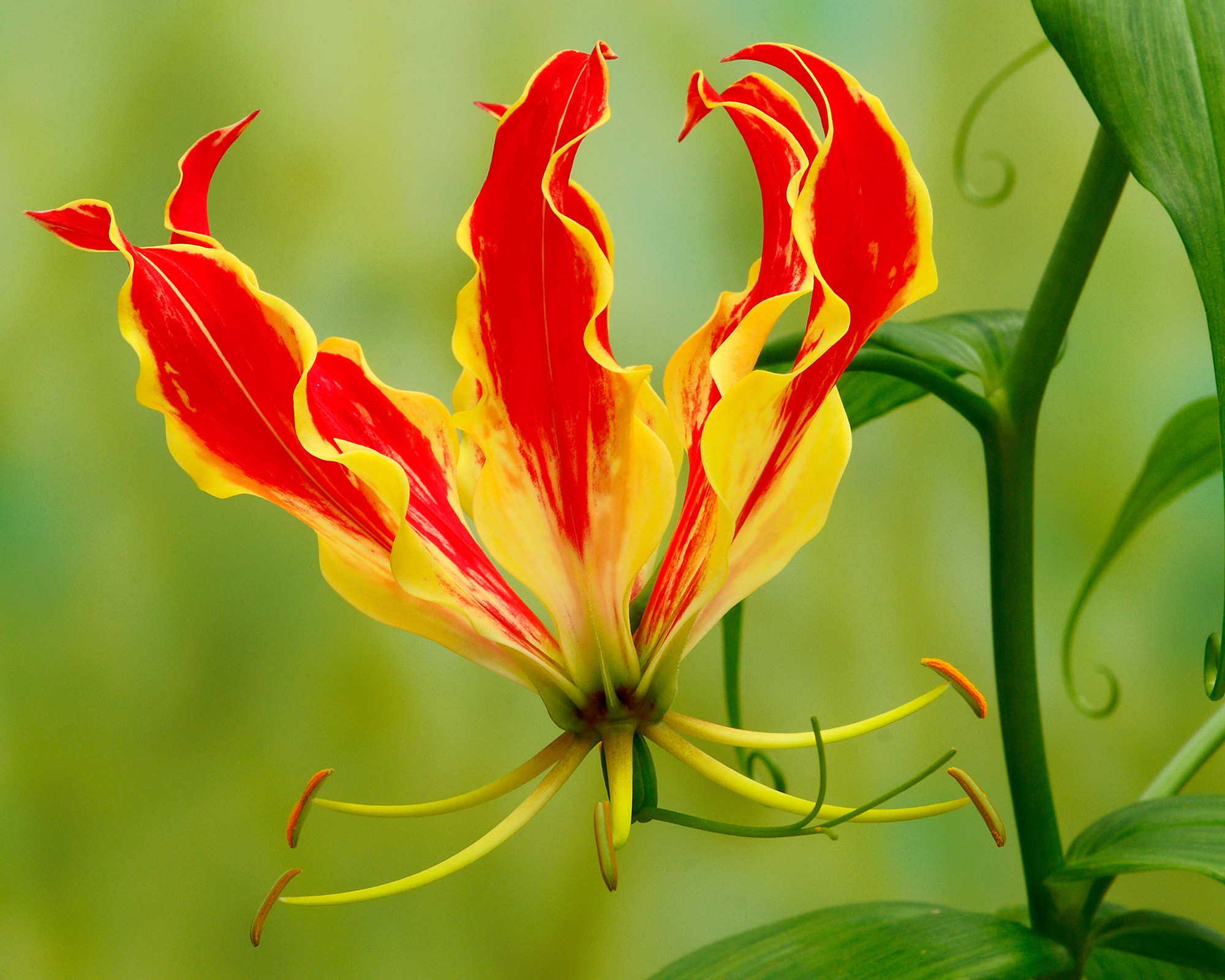
Gloriosa superba ‘Rothschildiana’
- Hardiness: USDA 8-10 (UK H1C)
- Height: 6ft (1.8m)
- Best for: height
The glory lily is a deciduous tuberous climber from Africa. This summer stunner produces sensational flame-like red and yellow flowers from mid summer to early fall. It’s an ideal choice for growing in a conservatory. Because it is a climbing perennial, it can also be trained against a pergola or a trellis with the right climbing plant support.
Plant in late winter in a conservatory or outside after the risk of frost has passed. Choose well-drained, moisture-retentive soil in sheltered full sun. Lay tubers horizontally with visible shoots facing upwards, 3-4in (8-10cm) deep.
In cold climates, lift and store tubers in a frost-free place over winter. Alternatively, grow in a big pot and move outside in summer. Bear in mind this can be one of the most poisonous plants for dogs.
12. Canna ‘Striata’ AGM
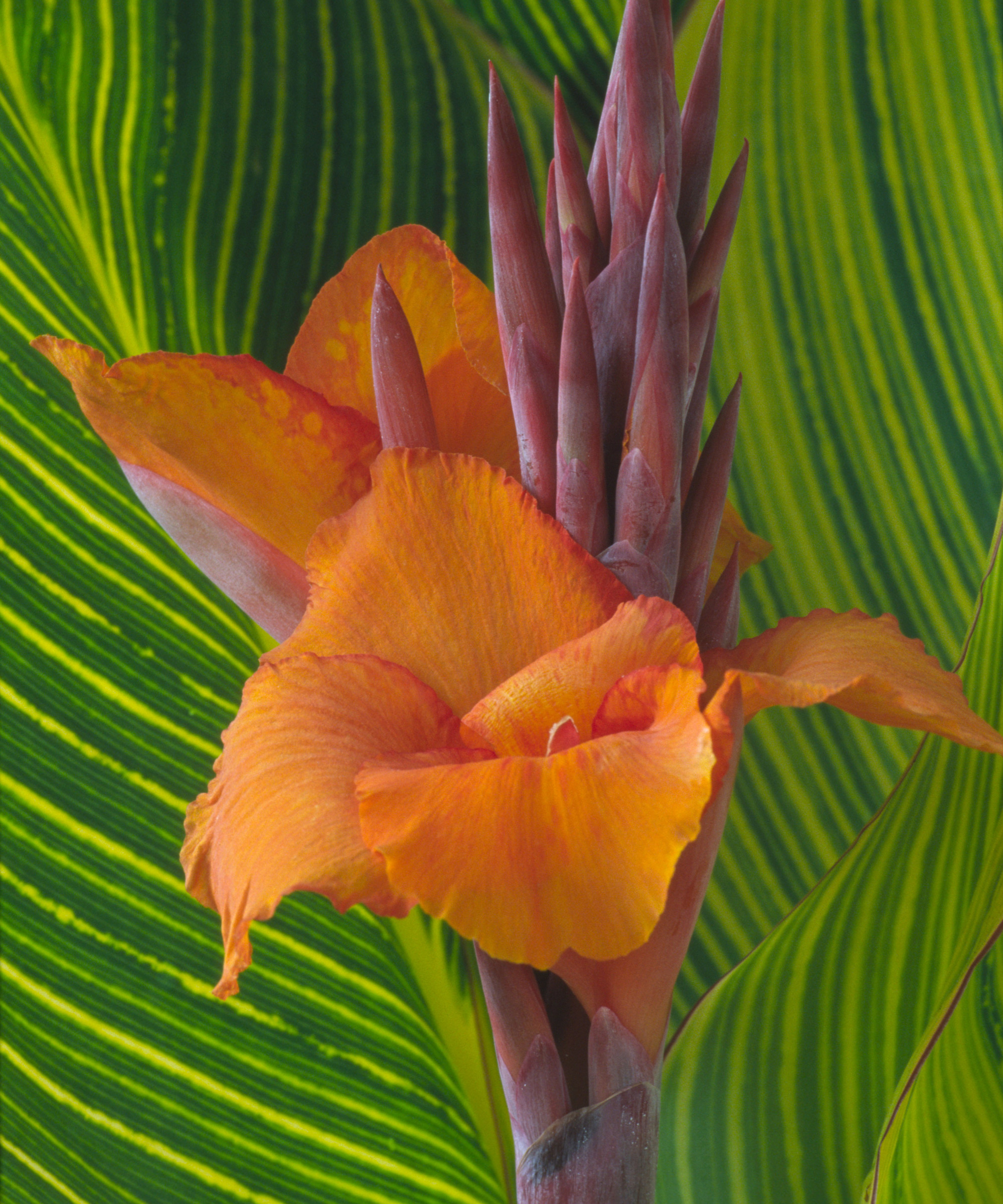
Canna ‘Striata’ AGM
- Hardiness: USDA 7-10 (UK H3)
- Height: 5ft (1.5m)
- Best for: exotic blooms
This exceptional canna (syn. ‘Bengal Tiger’, ‘Pretoria’) develops fiery amber blooms in late summer and early fall. And if you are looking for the best foliage plants for your garden, this canna has huge green leaves with yellow stripes, which contrasts beautifully with the petals.
Plant the rhizomes of these summer bulbs in late winter. Place in large containers undercover. Alternatively, plant 4-6in (10-15cm) deep in moisture-retentive, well-drained soil in sheltered full sun after the risk of frost has passed.
In mild areas, cover with mulch in autumn. In cold areas, lift and overwinter in a frost-free place.
13. Crinum x powellii
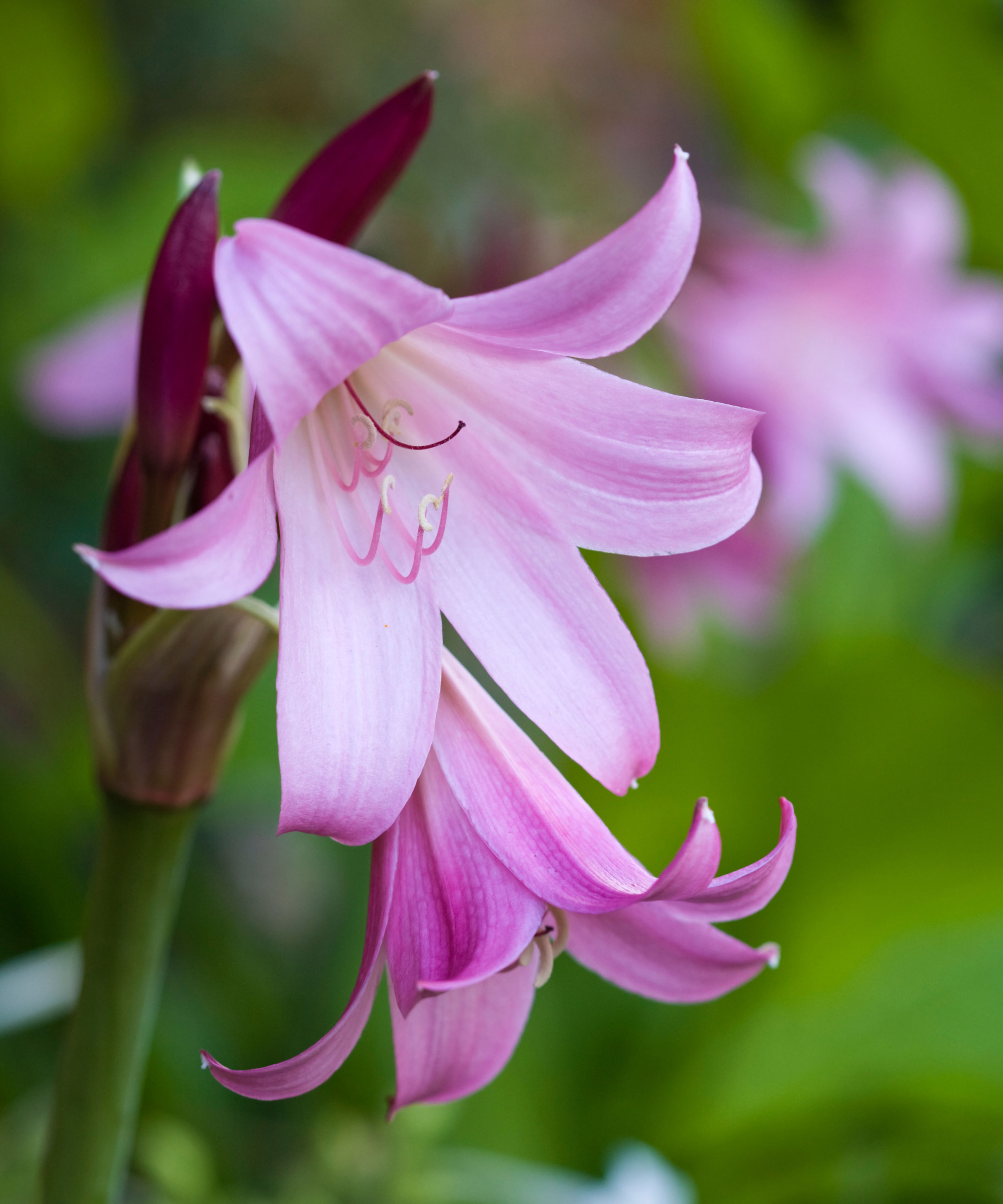
Swamp lily (Crinum x powellii)
- Hardiness: USDA 6-11 (UK H5)
- Height: 4ft (1.2m)
- Best for: fragrance
Robust, showy and exotic, the swamp lily is one of the finest late summer bulbs. It produces large, fragrant rose-pink trumpets on stout purple green stems and strappy leaves, in mid to late summer. Just take care when watering plants as, despite its name, it dislikes waterlogging.
Plant in later winter in containers under cover, or outside in late spring. Plant so the neck of the bulb is just above the surface, in humus-rich moist, deep, well-drained soil in sheltered full sun.
In milder regions, protect and feed with mulch in autumn. In colder areas, lift and overwinter in a frost-free place.
14. Hedychium densiflorum ‘Assam Orange’
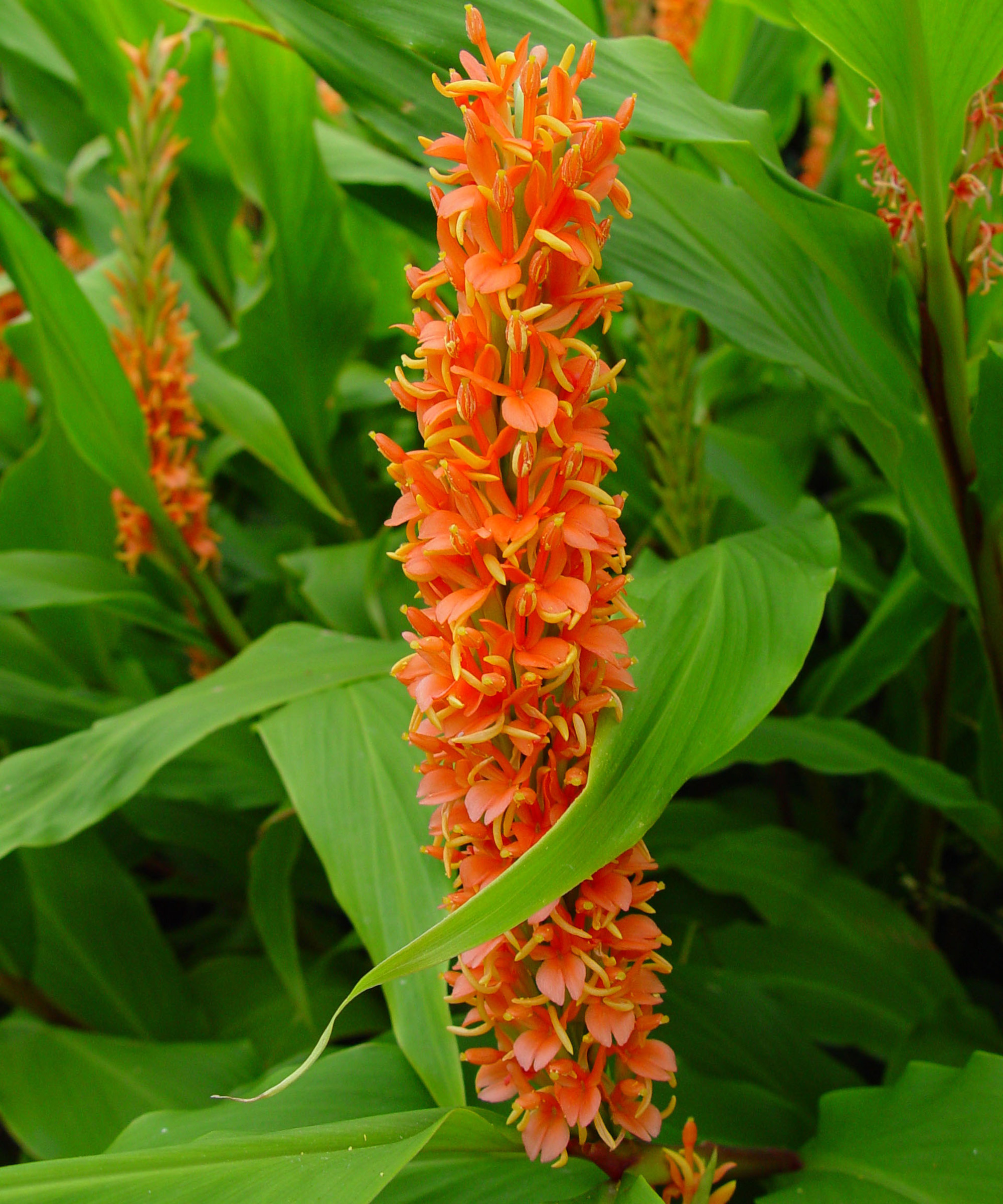
Hedychium densiflorum ‘Assam Orange’ (ginger lily)
- Hardiness: USDA 7-10 (UK H3)
- Height: 5ft (1.5m)
- Best for: exotic blooms
Also known as ginger lily, this Himalayan rhizomatous perennial is an essential plant for daring tropical garden ideas – and a great way to create a jungle mood. In late summer early fall, it produces tall torches of fragrant orange flowers above large, lance-shaped leaves.
In late spring, plant 4in (10cm) deep in moisture-retentive, well-drained soil in sheltered sun or semi-shade.
Perhaps the hardiest of the ginger lilies, this will take temperatures down to 5˚F (-15°C). In cold areas, protect by mulching before the frosts. In warm climates, it can be vigorous.
What is the best way to plant summer bulbs?
Every bulb has specific requirements, so check with your supplier. But in general, most summer-flowering bulbs can be potted into containers under cover in late winter or early spring. Then they can be taken outside after all risk of frost has passed in late spring, or planted outside in late spring.
However, this isn’t always the case – crocosmia can be planted outside in early spring, and lilies can be planted between mid fall and early spring.
Most summer bulbs can be planted around 4-6in (10-15cm) deep in moisture-retentive, well-drained soil in full sun. If you are not sure, check you have the right soil type and make adjustments as necessary.
It’s also wise to dig in some organic matter (such as compost), before planting, to boost retentiveness and drainage. You can find lots of tips on composting in our guide.
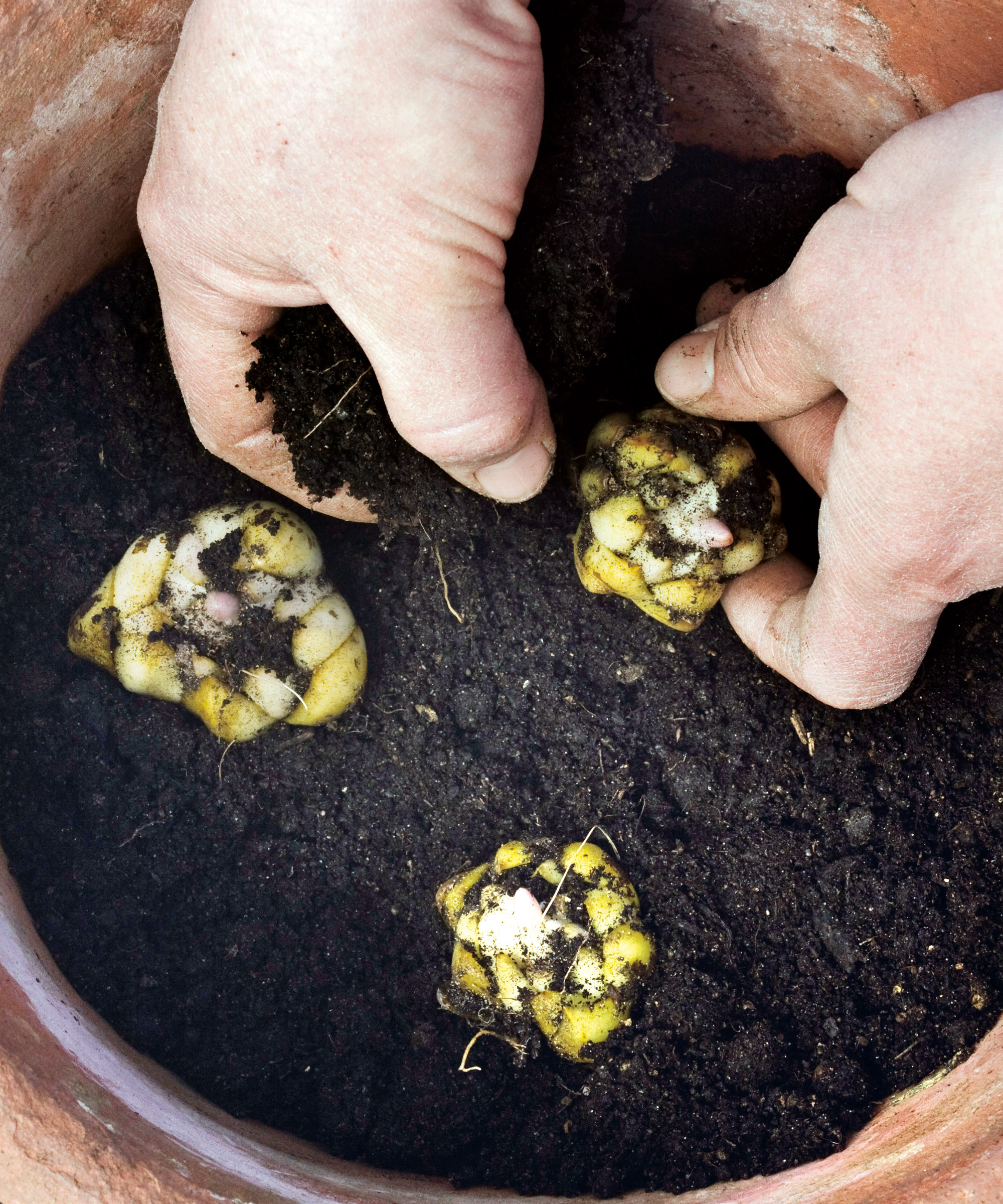
Plant summer bulbs like lilies at the correct depth and check the packaging or ask the supplier if unsure
Which summer bulbs can you grow in containers?
Most bulbs can be grown in generous well-drained pots of loam-based compost. However, fans of container gardening ideas need to bear in mind that vigorous cannas and hedychiums aren’t ideal. You might end up throwing the pot away, unable to get the rhizomes out, if you leave them in the container for more than one season.
Christine Skelmersdale recommends growing short lilies and eucomis in pots. Summer bulbs like eucomis should be kept moist in summer, but watered sparingly in winter. In addition, Beth Chatto suggests Crinum x powellii is a good option for large garden planters.
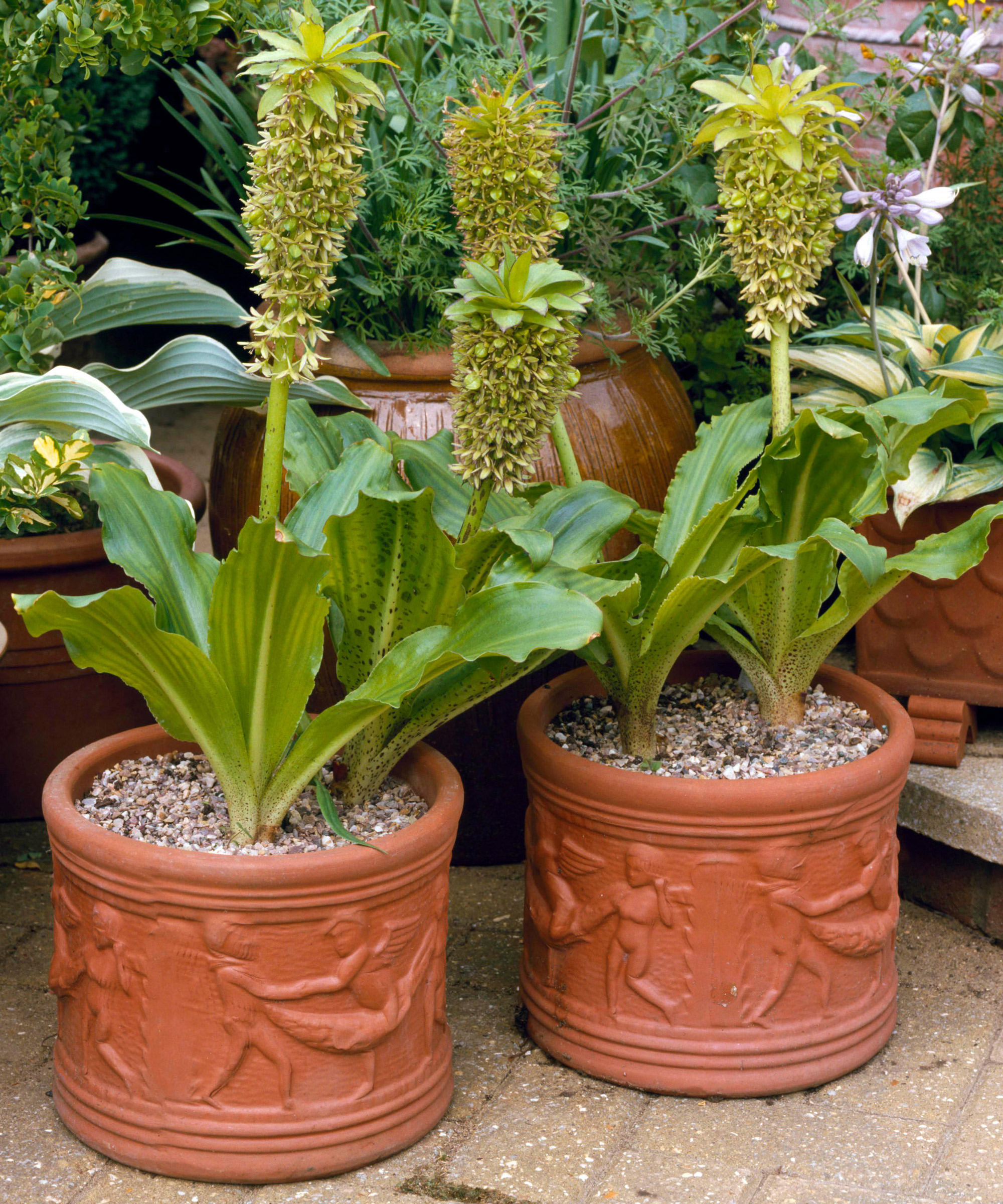
Eucomis is just one of the summer bulbs that will flower reliably when grown in pots
How do you look after summer bulbs?
Caring for your summer bulbs is pretty straightforward. Just water and feed with diluted tomato food regularly during the growing season, and water daily in hot weather. If you’re keen to know how to grow dahlias, bear in mind that dahlia bulbs (and cannas) are particularly thirsty.
Check how tender your bulb is and match it with the hardiness zone you live in. In general, bulbs can be protected under a mulch (such as straw) to protect plants from frost in milder regions. Alternatively, they can be lifted and stored under cover in a frost-free place in very cold regions.
Other than that, all you need to do is keep checking the progress of your bulbs.

As assistant editor of Amateur Gardening magazine, Janey's gardening passion was fostered from an early age, when her amazing mum had her deadheading hydrangeas, mulching roses, and propagating strawberry plants from runners for school open days. She's also taken part in lots of conservation and rewilding projects for the RHS and TCV as a way of exploring her horticultural horizons.
